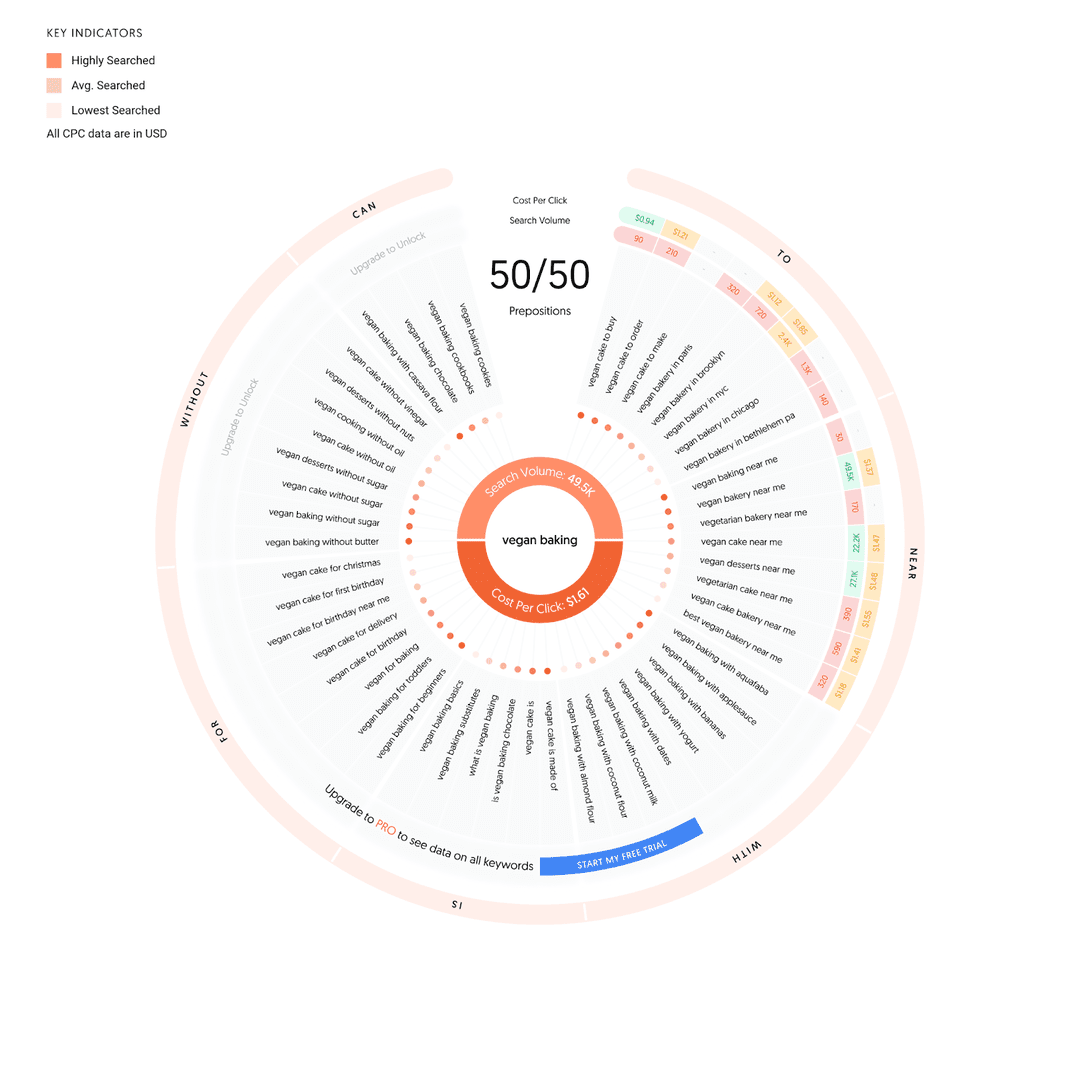Are you looking to start a blog, YouTube channel, affiliate program, or an ecommerce store and don’t know which niche to focus on?
Perhaps you want to write and sell ebooks but are unsure which topics to write about.
Every successful person making money online once stood where you stand now. They make money because they picked a great niche. A niche they have sufficient knowledge about, a niche that has significant enough demand.
In this article, we share some niche examples to guide your selection process and how to find a profitable niche market.
Excited? Let’s dig in!
What is a Niche?

When you think of a niche, I want you to think of specialization.
In the eCommerce clothing market, clothes for plus-sized women is a niche, and dresses for newborns is another. Making money online is another example of a broad market. Some of the niches in this market include blogging, becoming a freelancer, dropshipping, creating courses, and selling ebooks.
In digital marketing, a search engine optimization (SEO) specialist helps big and small businesses and brands rank higher on search engine results for specific keywords. On the other hand, a Google Ads specialist helps brands run, manage, and optimize campaigns.
As you can see, it’s about having a general market and specializing in a sub-segment of that market. The sub-segment is the niche. A niche has its identity and characteristics different from the larger market.
It’s also worth pointing out that a niche doesn’t equate to a small market. The demand for a niche could be huge or small, doesn’t make it less of a niche either way.
What Are Some Popular Niche Examples?
Ten examples of popular niche examples include:
- Pet care
- Gamers
- Home improvement
- Digital nomads
- Vitamin supplements
- Making money online
- Eco-friendly personal care
- Personal growth
- Weight loss
- Vitamin supplements
Why Have a Niche?
The niche you choose is one of the primary factors determining if you will be successful online or not. Let’s examine why it’s so important.
Specialize in Something
When you specialize in a niche, you position yourself as an expert on that topic or sub-market. You’ll become the go-to authority on the niche if you consistently produce quality content.
Less Competition
It’s easy to get drowned in the general market because it is typically crowded. It is, however, a simpler task to stand out in an uncrowded niche market because of less competition.
There may be thousands of ecommerce stores selling clothes, but only a fraction will be selling clothes for pregnant women or newborns.
Establish a Loyal Customer Base
Think of some websites you’ve bookmarked before and the common theme about them. You trust the content enough to keep going back to it time after time.
Even without bookmarks, you probably have some websites you’ll open on search results before others, even if they do not appear in first or second position. It’s because you trust the website to provide the information you need.
Quality content builds trust. Trust builds brand loyalty. This is easier to achieve in a niche market.
More Targeted Marketing
It’s easier to specify the demography and interest of the target audience for niche marketing. Targeted marketing has a better ROI than mass marketing.
For example, let’s say your niche caters to new mothers. You can easily target 23-35 years old females interested in motherhood, family, and parenting on Facebook.
More Niche Examples
There are so many niche examples. To illustrate, we would examine three broad general markets and potential niches under these markets. These broad markets include fashion, food, and marketing.
Niche Marketing Examples
Some examples of niches or segments companies target in their marketing include:
- Conscious Consumers
- Travelers
- Health and Wellness
- Gamers
- Remote Workers
- Renters
Examples of Niche Markets in Food
Some niche examples under this general market that you can cater to in your online project include:
- Cafes
- Family-Style
- Fine Dining
Examples of Niche Markets in Fashion
The fashion industry is so broad, and there are potentially so many niches you can decide to sell to. Some examples include:
- Designer Fashion such as Gucci and Louis Vuitton.
- Vintage Fashion for those into clothes from old eras.
- Eco-Friendly Fashion for those who care about the environment.
How to Find Your Niche Market?
Now that you understand niche markets, how do you choose one?
Choosing the right niche depends on three key factors. The first is your ability to research. The second is what you’re significantly good at, and the last is the demand in that niche.
Let’s now examine how these factors play out.
STEP 1: Start by examining your skills and interests
If you’re creating an ecommerce store, this advice may not apply, even if it can be an advantage. However, previous experience is essential if you’re building a blog, a course, a YouTube channel, or an ebook.
One of the benefits of previous experience and getting skilled in a niche is that you can offer fresh perspectives, anecdotes, and knowledge that may not be available in that niche.
Without previous experience or present interests, you’ll probably be regurgitating what’s already on the internet. So, no competitive advantage of niche marketing.
So, start by examining all the things you’ve done in the past or currently investing time and money in. Your past jobs, passions, and hobbies all count. Then ask yourself which ones you can write on or produce content for regularly without getting bored or tired.
You may have recently transitioned to a vegan diet. That’s a potential place to start from. You may drill down to vegan baking to make it even more specific.
STEP 2: Check your potential niches on Google Trends
Google Trends shows you keyword search interest from around the world. You can use this tool to find some trending niches.
For example, the image below shows the search interest in the term “pregnant clothes” in the United States in the past 12 months.

One of the things you’ll notice is that search interest rarely dips below 50. When examining a niche, you ideally want the audience interest to be in an uptrend or consistent over time.
You can also assess seasonal niches through this tool. Also, a downturn in search interest during a period might be more reason to dig further.
For example, many niches suffered during the lockdown period around the world. So, that’s something to think about.
In the same vein, that period gave a false picture of interest in some niches. So be sure to expand the period to five years.
STEP 3: Use Google Search
Now you must examine if the niche is saturated and if there are potential ways to differentiate yourself from the competition. Searching on Google is one way to do this.
By entering your niche market on Google Search, you may even find potential sub-segments that you can pivot to. The primary goal, however, is to find underserved demand and gaps you can fill.
While entering the search term in the text box, watch out for Google’s suggestions. These are questions users ask that are related to your query. These queries are potential goldmines for gaps in the niche.
For each search, pen down the websites ranking high on the search results. Then, check these websites on Similarweb to suss out your competitors further.
You can see the demography of their website visitors, where they come from, their audience’s online interests, similar websites and competitors, and top marketing channels.
STEP 4: Follow up with keyword research
Dig further into what people are searching for in your niche by conducting keyword research. You can use both Answer the Public and Google’s Keyword Planner tool.
Here’s “vegan baking” in Answer the Public and 50 popular question people are asking:

There are many summaries you can draw from the above image. Firstly, people are looking for where to buy vegan products like cakes and desserts.
If you’re creating a blog, you can compile bakeries that make vegan-baked products in places like NYC, Brooklyn, San Francisco, and Chicago.
If you’re a vegan baker, you can start making vegan products and begin targeting people in these areas with ads.
People are also searching for cookbooks, recipes, beginner guides, and ideas for toddlers.
STEP 5: Create a minimum viable product (MVP) to test your niche
Let’s assume you have a niche that you’re satisfied with. It’s best practice to test the niche to see if you need to invest serious money and time.
Let’s say you decided to create and sell a vegan baking cookbook. You can create a landing page for the cookbook, detailing what it entails and your credentials.
The landing page is for people to pre-book the cookbook or to download a sample ebook. You can create one using Leadpages or Carrd.
Run ads to validate interest
Next, create paid ads to gauge people’s interest in pre-booking the cookbook. People may see the ads and not click on them, which shows no interest. The ads may also be bad, but let’s assume they’re not.
Potential customers may see the ad, click on it and then give you their email. That shows interest and commitment to the product.
You can then use the ad impressions and registrations to estimate the numbers if you expand your ad budget.
STEP 6: Dive in!
After validating your niche idea, it’s time to dive in and start creating your blog, course, ebook, YouTube channel, or ecommerce/dropshipping store.
There’ll be a lot of learning and failing forward. Learn quickly and test ideas on a small scale before going big, especially for paid ads on social media.
Frequently Asked Questions
Below, we answer some questions regarding niches.
What Niche is Trending Now?
There are many trending niches, but one of the most popular markets is the eco-friendly space. Sub-segments in this market include solar energy products, eco-friendly kitchen products like biodegradable trash bags and cutlery, ethical apparel, clean beauty, and much more.
How To Identify a Business Niche?
Firstly, identify problems and issues people are dealing with and research which solutions currently exist for these problems. Then explore the gaps the current solutions do not fix as potential differentiating factors and competitive advantage.
Lastly, test your ideas with a minimum viable niche product before launching fully.
Wrapping Up
The choice of a niche can make or break your online niche business. The perfect spot is where your passion, interest, or experience intersect with an in-demand market need with low competition.
The critical five steps to identifying a niche include examining your interests and skills, researching potential gaps in the market and your competition, validating the idea with an MVP, and finally diving in.
Do you have any more tips for identifying a niche? I would love to hear your thoughts in the comment section.







